Judi Lynn
Judi Lynn's JournalArchaeologists Discover Ancient Mayan Board Game - Here's What It Can Teach Modern Educators
AncientPages.com | May 19, 2023
AncientPages.com - Games have been played for thousands of years in cultures across the world.
There's the chequerboard game Senet, played in Egypt around BCE 3100. The African cup board game Mancala has been played since BCE 1400. Chess originated in India over 1,500 years ago. And the strategic game Go began in China 2,500 years ago.
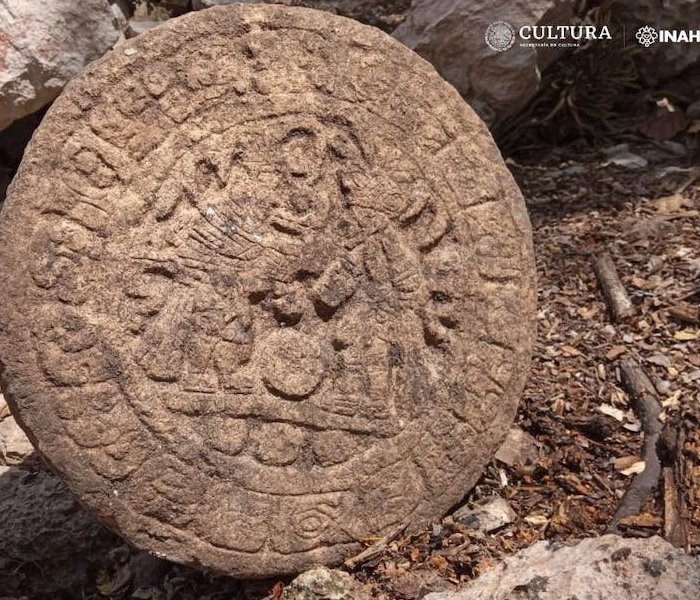
Archaeologists Discover Ancient Mayan Board Game – Here’s What It Can Teach Modern Educators
AncientPages.com | May 19, 2023 | Featured Stories
Share via FacebookShare via TwitterShare via PinterestShare via RedditShare via Email
AncientPages.com - Games have been played for thousands of years in cultures across the world.
There's the chequerboard game Senet, played in Egypt around BCE 3100. The African cup board game Mancala has been played since BCE 1400. Chess originated in India over 1,500 years ago. And the strategic game Go began in China 2,500 years ago.
Archaeologists Discover Ancient Mayan Board Game - Here's What It Can Teach Modern Educators
The ball game marker discovered in Chichén Itzá. Credit: INAH
The Mayan civilization—which flourished in central America from BCE 2000 to 1500 AD—had several popular games. These games were thought to have the supernatural power to predict war. They include a cross-shaped board game called Patolli and a ball game called Pok-a-Tok.
Recently, a stone scoreboard was found by archaeologists in Chichén Itzá, Mexico's Yucatán peninsula. The Mayan people appeared to have used it to play a ritualistic game with a heavy ball.
This game held significant cultural and religious importance for the Mayan civilization. More than a simple recreational activity, it reflected the deep-rooted beliefs and values of the Mayan people. For Mayans, games provided a platform for the expression of physical abilities, the establishment of social order and the connection between the mortal and the divine.
The game discovered in Chichén Itzá symbolizes the delicate balance between light and darkness, embodying a cosmic struggle. Like other Mayan games, it was believed to influence the fate of harvests, the climate, communities and individuals.
In Mayan culture, winning a game like this was seen as a sign of divine favor. They believed that victorious people or teams had been chosen by the gods. Those who consistently lost were sometimes offered as sacrifices to the deities. Mayan games were not solely intended for entertainment, but served as ways to connect with the divine.
More:
https://www.ancientpages.com/2023/05/19/ancient-mayan-board-game/
'We Were Gobsmacked': Giant Study Reveals Why Moss Is Vital For The Planet
NATURE
09 May 2023
ByTESSA KOUMOUNDOUROS

Moss decorated by morning dewdrops. (cristinagonzalez/RooM/Getty Images)
More like a verdant rug than a forest or pasture, the humble moss packs a surprising lot of punch for being such a small plant. In an amazing new study, researchers have only just discovered how vital this diverse group of itty-bitty botanicals is to ecosystems around the world.
"We were gobsmacked to find that mosses were doing all these amazing things," exclaims David Eldridge, an ecologist at the University of New South Wales, Australia.
Sampling mosses from over a hundred sites across eight different ecosystems, Eldridge and colleagues estimated populations of the plant cover a staggering 9.4 million square kilometers in the types of environments surveyed. This is comparable to the size of China or Canada.
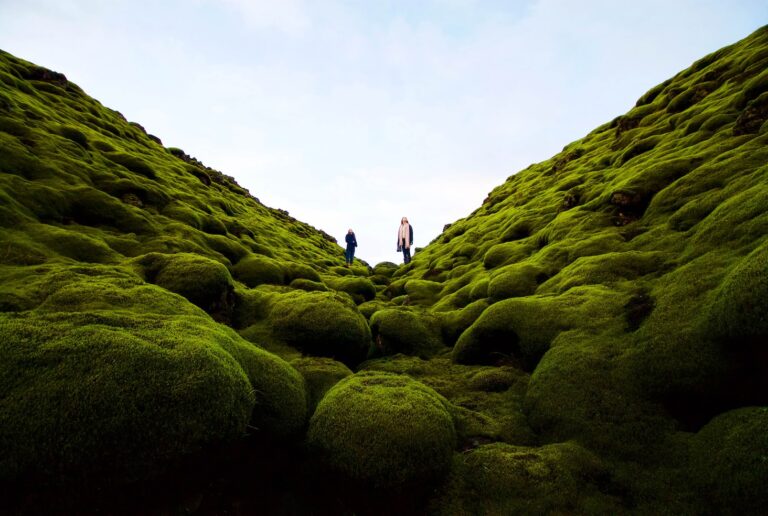
Moss growing on volcanic rocks in Iceland tundra. (Dylan Shaw/Unsplash)
Ancestors of all today's living plants, these ancient organisms are more simplistic in their structure than their more modern descendents, with sprigs full of tiny leaves, typically just one cell thick. But that doesn't make them any less mighty.
More:
https://www.sciencealert.com/we-were-gobsmacked-giant-study-reveals-why-moss-is-vital-for-the-planet
Going to the Dominican Republic Showed Me How Dark Haiti Is
JUNE 27, 2023
Country:
DOMINICAN REPUBLIC HAITI
The Dominican flag waving at an army base in Elias Piña, a town near Haiti's Central Department. Image by Marvens Compère/The Haitian Times. Dominican Republic.
SANTO DOMINGO, Dominican Republic — I started fighting back tears again.
This time, it wasn’t while I was doing a phone interview as usual, like the one with the lady whose 14-year-old daughter was fatally shot in June 2020.
This time, it was while I was on my way back from the Dominican Republic to Haiti after reporting for this project in January 2023.
The streets in Cap-Haitien were so dark as I looked outside the window of the Caribe Tour bus. Like you really had to squint your eyes to see the houses. But in the Dominican Republic, there were street lights. That country wasn’t in the dark.
Cap-Haitien’s darkness reminded me of how lost Haiti is: The president was assassinated; people are struggling to eat; there’s no electricity; the healthcare system is in crisis; there’s gang violence and so many other problems. About everything that can go wrong in a country is happening in Haiti.
More:
https://pulitzercenter.org/stories/going-dominican-republic-showed-me-how-dark-haiti
Important information in the 4th paragraph of the above article. Very important.
That paragraph, again, is this:
Semilla was founded in 2017, in the spirit of the 2015 mass anti-corruption protests that ended with President Otto Pérez Molina and VP Roxana Baldetti’s imprisonment on customs fraud charges. Since its inception, the party has invoked the democratic tradition of the Guatemalan Revolution (1944-1954).
Please check the following information in Wikipedia, to get an accurate sense of why that Guatemalan Revolution, which meant so much to the people, suddenly ended:
Wikipedia: 1954 Guatemalan coup d'état
The 1954 Guatemalan coup d'état (Golpe de Estado en Guatemala de 1954) was the result of a CIA covert operation code-named PBSuccess. It deposed the democratically elected Guatemalan President Jacobo Árbenz and ended the Guatemalan Revolution of 1944–1954. It installed the military dictatorship of Carlos Castillo Armas, the first in a series of U.S.-backed authoritarian rulers in Guatemala.
The Guatemalan Revolution began in 1944, after a popular uprising toppled the military dictatorship of Jorge Ubico. Juan José Arévalo was elected president in Guatemala's first democratic election. He introduced a minimum wage and near-universal suffrage, and turned Guatemala into a democracy. Arévalo was succeeded in 1951 by Árbenz, who instituted land reforms which granted property to landless peasants.[1] The Guatemalan Revolution was disliked by the United States federal government, which was predisposed during the Cold War to see it as communist. This perception grew after Árbenz had been elected and formally legalized the communist Guatemalan Party of Labour.
The United Fruit Company (UFC), whose highly profitable business had been marginally affected by the slight softening of highly exploitative labor practices in Guatemala, engaged in an influential lobbying campaign to persuade the U.S. to overthrow the Guatemalan government. U.S. President Harry Truman authorized Operation PBFortune to topple Árbenz in 1952, which was a precursor to PBSuccess.
Dwight D. Eisenhower was elected U.S. president in 1952, promising to take a harder line against communism, and his staff members John Foster Dulles and Allen Dulles had significant links to the United Fruit Company. The U.S. federal government drew exaggerated conclusions about the extent of communist influence among Árbenz's advisers, and Eisenhower authorized the CIA to carry out Operation PBSuccess in August 1953.
The CIA armed, funded, and trained a force of 480 men led by Carlos Castillo Armas. After U.S. efforts to criticize and isolate Guatemala internationally, Armas' force invaded Guatemala on 18 June 1954, backed by a heavy campaign of psychological warfare. This included a radio station which broadcast anti-government propaganda and a version of military events favorable to the rebellion, claiming to be genuine news, as well as air bombings of Guatemala City and a naval blockade.
More:
https://en.wikipedia.org/wiki/1954_Guatemalan_coup_d%27%C3%A9tat
~ ~ ~
To quickly move the U.S. public to support the invasion of Guatemala, the US Government employed the services of Edward Bernays, nephew of Sigmund Freud, who distinguished himself by becoming widely known as the "Father of Spin."
The part of this article dealing with his involvement in the invasion of Guatemala starts down the page a bit:
How Did We Get Here?
THE HISTORY OF MARKETING, PROPAGANDA, AND POLITICS FROM WWI TO THE POST-TRUMP ERA
. . .
Part 3. Corporate Propaganda and Politics Collide
We can see how Bernays used propaganda for both profit and politics simultaneously when he helped orchestrate the Guatemalan coup in 1954 to overthrow democratically elected president Jacobo Árbenz on behalf of his client, the United Fruit Company (now Chiquita), to protect company profits.
In his biography, Bernays describes the company:
“United Fruit was a way of life; the company was conducted like a private government. It had its own behavior patterns and loyalties. Individual lives were merged with the company’s life, for the company decided who was to live where, and how long. United Fruit employees in the tropics were thrown among other members of the company in all their activities. The company plantation in the jungle town was a settlement of American people, houses, and folkways…the native agricultural workers were treated as human machines rather than human beings and without regard to their folkways or culture patterns.”
Reading this horrifying description now, it’s hard to believe that Bernays thought this company deserved rescuing through public relations, but his book recounts how — despite seeing the ways United Fruit dehumanized its workers and bought up huge swathes of lands from farmers, forcing locals to become dependent on its corporate rule — he helped wage a decades-long war in Central America to secure United Fruit’s power and profits.
When Jacobo Árbenz took office, he began nationalizing the land controlled by United Fruit and returning it to the Guatemalan people. Bernays launched a public relations campaign to position Árbenz, not as a nationalist trying to secure his peoples’ ability to survive, but a communist under Soviet influence, who was working with the USSR to sabotage American capitalism and imperialism.
Thanks to Bernays’ relentless propaganda, he convinced President Dwight D. Eisenhower that Guatemala would soon fall to communist rule, which led to Operation PBSuccess. The CIA paid and trained Honduran militias to invade Guatemala and overthrow Árbenz.
The leader of the Honduran militia, Carlos Castillo Armas, replaced Árbenz and became the first in a series of military dictators that controlled Guatemala until the 1990s — all backed by the CIA. Armas returned the nationalized land to United Fruit and ensured that the American company received preferential treatment in Guatemalan commerce.
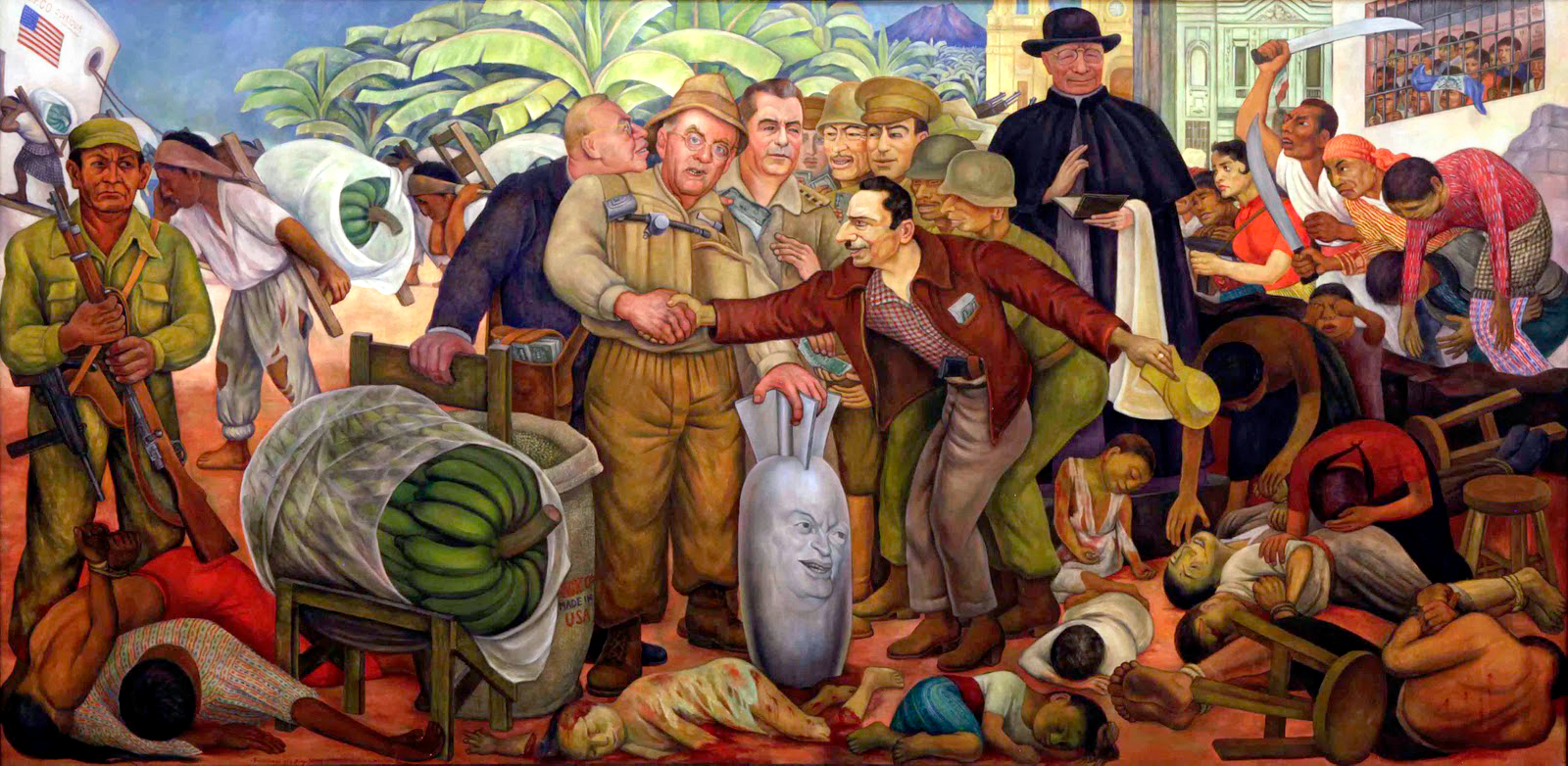
The "Gloriosa Victoria" mural by Diego Rivera, which depicts the 1954 Guatemalan coup. The US Secretary of State, John Foster Dulles, is painted striking a deal with Castillo Armas. Foster holds a missile with Eisenhower’s face. The group is flanked by an armed rebellion and laborers in a banana plantation.
While Bernays left United Fruit in 1959, after the Cuban Revolution, saying, “I, too, became a casualty of this revolution” — an appallingly glib and self-involved statement in light of the many deaths his work wrought — his influence endured.
More:
https://rachaelkayalbers.com/trump-fbi-raid-history-marketing-propaganda/
~ ~ ~
Wikipedia: Edward Bernays
Edward Louis Bernays (/bɜːrˈneɪz/ bur-NAYZ, German: [bɛʁˈnaɪs]; November 22, 1891 ? March 9, 1995) was an American theorist, considered a pioneer in the field of public relations and propaganda, and referred to in his obituary as "the father of public relations".[3] His best-known campaigns include a 1929 effort to promote female smoking by branding cigarettes as feminist "Torches of Freedom", and his work for the United Fruit Company in the 1950s, connected with the CIA-orchestrated overthrow of the democratically elected Guatemalan government in 1954. He worked for dozens of major American corporations including Procter & Gamble and General Electric, and for government agencies, politicians, and nonprofit organizations.
Of his many books, Crystallizing Public Opinion (1923) and Propaganda (1928) gained special attention as early efforts to define and theorize the field of public relations. Citing works of writers such as Gustave Le Bon, Wilfred Trotter, Walter Lippmann, and Sigmund Freud (his own double uncle), he described the masses as irrational and subject to herd instinct—and he outlined how skilled practitioners could use crowd psychology and psychoanalysis to control them in desired ways.[4][5] Bernays later synthesized many of these ideas in his postwar book, Public Relations (1945), which outlines the science of managing information released to the public by an organization, in a manner most advantageous to the organization. He does this by first providing an overview of the history of public relations, and then provides insight into its application.
Bernays was named one of the 100 most influential Americans of the twentieth century by Life.[6] He was the subject of a full-length biography by Larry Tye entitled The Father of Spin (1999) and later an award-winning 2002 documentary for the BBC by Adam Curtis entitled The Century of the Self.
. . .
United Fruit and Guatemala
See also: 1954 Guatemalan coup d'état
The United Fruit Company (today's Chiquita Brands International) hired Bernays in the early 1940s for the purpose of promoting banana sales within the United States, which he did by linking bananas to good health and to American interests and by placing them strategically in the hands of celebrities, in hotels, and other conspicuous places. Bernays also argued that United Fruit needed to put a positive spin on the banana-growing countries themselves, and for this purpose created a front group called the Middle America Information Bureau, which supplied information to journalists and academics.[53]
United Fruit shut down the Middle America Information Bureau in 1948 under the new presidency of Thomas Dudley Cabot. Bernays resented this change but stayed on with the company, for a reported annual fee of more than $100,000.[54] Bernays worked on the national press and successfully drummed up coverage of Guatemala's 'Communist menace'.[55]
He recommended a campaign in which universities, lawyers, and the U.S. government would all condemn expropriation as immoral and illegal; the company should use media pressure "to induce the President and State Department to issue a policy pronouncement comparable to the Monroe Doctrine concerning expropriation." In the following months, The New York Times, the New York Herald Tribune, Time, Newsweek, and the Atlantic Monthly had all published articles describing the threat of Communism in Guatemala. A Bernays memo in July 1951 recommended that this wave of media attention should be translated into action by promoting:
(a) a change in present U.S. ambassadorial and consular representation, (b) the imposition of congressional sanctions in this country against government aid to pro-Communist regimes, (c) U.S. government subsidizing of research by disinterested groups like the Brookings Institution into various phases of the problem.[56]
Per Bernays's strategy, United Fruit distributed favorable articles and an anonymous Report on Guatemala to every member of Congress and to national "opinion molders".[57][58] They also published a weekly Guatemala Newsletter and sent it to 250 journalists, some of whom used it as a source for their reporting.[58] Bernays formed close relationships with journalists including The New York Times reporter Will Lissner and columnist Walter Winchell.[55][56] In January 1952 he brought a cohort of journalists from various notable newspapers on a tour of Guatemala, sponsored by the company. This technique proved highly effective and was repeated four more times.[58] In June, 1954, the U.S. Central Intelligence Agency effected a coup d'état code-named Operation PBSuccess. The CIA backed a minimal military force, fronted by Carlos Castillo Armas, with a psychological warfare campaign to portray military defeat as a foregone conclusion. During the coup itself, Bernays was the primary supplier of information for the international newswires Associated Press, United Press International, and the International News Service.[59][60]
More:
https://en.wikipedia.org/wiki/Edward_Bernays
Arvalo Breaks into Presidential Runoff for Center-Left Surprise in Guatemala

Monday, June 26, 2023
Roman Gressier
El Faro is an investigative newsroom that shines a light on corruption in Central America. Subscribe to our newsletter.
With 98 percent of ballots counted at 9 ET on Monday, social-democrat Congressman Bernardo Arévalo of the Semilla (“Seed”) party shocked Guatemala’s political scene by grabbing second place in the presidential election (11.9 percent of the vote) alongside running mate Karin Herrera, a biology professor from the country’s public university.
In an August 20 runoff, he will face former first lady and legislative power broker Sandra Torres, of the National Unity of Hope (UNE) party (15.6 percent), who has studiously avoided criticizing the dismantling of democratic institutions in the country.
“We can now say that it’s a definitive trend,” Supreme Electoral Tribunal (TSE) Magistrate Gabriel Aguilera announced at 3:20 a.m. “It would be most responsible to make the announcement tomorrow [Monday], but the two who are leading are UNE and Semilla.”
Semilla was founded in 2017, in the spirit of the 2015 mass anti-corruption protests that ended with President Otto Pérez Molina and VP Roxana Baldetti’s imprisonment on customs fraud charges. Since its inception, the party has invoked the democratic tradition of the Guatemalan Revolution (1944-1954).
More:
https://elfaro.net/en/202306/centroamerica/26908/arevalo-breaks-into-presidential-runoff-for-center-left-surprise-in-guatemala
Flying squirrels in China have discovered a clever new trick to store nuts for longer
By Carissa Wong published about 12 hours ago
Two species of tropical flying squirrels have worked out that if they nibble grooves around nuts to store them between tree branches, they are preserved for longer.

A squirrel going to get a nut it stored in the branches of a tree in a rainforest in China. (Image credit: Han et al/eLife)
Flying squirrels in China have developed a clever way to hide their nuts — chewing grooves in them so they can be stored between tree branches.
The unusual behavior, seen in two species in the tropical rainforests of Hainan Island, may preserve the critters' food for longer than burying the nuts in the moist forest floor, scientists said.
"Only these two flying squirrel [species] have this technique and no other squirrel species or animals are known to have this ability," Han Xu, professor of ecology at the Chinese Academy of Forestry in China, told Live Science. The findings were published June 13 in the journal eLife.
To capture the unusual behavior, Han and his colleagues set up 32 infrared cameras across 13.5 acres (5.5 hectares) of rainforest where they had found 151 nuts wedged between tree branches. Most of the nuts were stored between 5 and 8 feet (1.5 to 2.5 m) above the ground.
More:
https://www.livescience.com/animals/land-mammals/flying-squirrels-in-china-have-discovered-a-clever-new-trick-to-store-nuts-for-longer
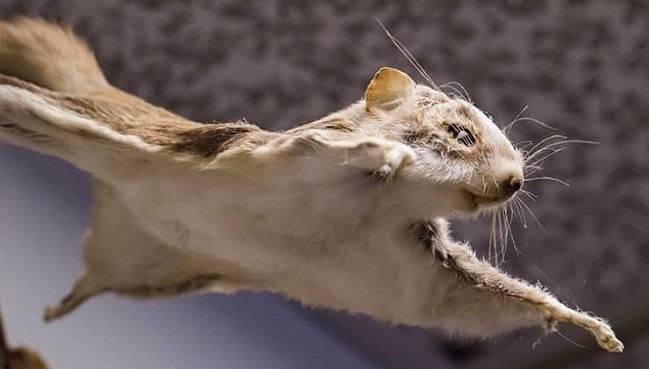
Chinese flying squirrel

Chinese flying squirrel

Young Chinese flying squirrels
Short video showing Red Chinese Giant Flying Squirrels
Colossal cave in Mexico that formed 15 million years ago is even more enormous than we thought
By Lydia Smith published about 16 hours ago
The Sistema Huautla in Oaxaca is the 10th deepest cave on Earth, and a explorers with a 2023 expedition to map the system have added over 700 feet to its length.

Explorer Brad Wuest descending into an entrance pit in the Sistema Huautla cave system in Mexico. (Image credit: Chris Higgins)
The deepest cave in the Western Hemisphere — the Sistema Huautla in Mexico — is even longer than originally thought, scientists and cavers have discovered.
Cave
explorers expanded the map of Sistema Huautla, a cave system in the Sierra Mazateca mountains in the southern Mexican state of Oaxaca, by 728 feet (222 meters). This means the known length of the cave is just over 62.7 miles (100 kilometers) — but further exploration may reveal it is even longer.
Sistema Huautla, the 10th-deepest cave in the world, was first discovered in the 1960s by cavers from Austin, Texas. Since 2014, researchers have carried out annual expeditions as part of the Proyecto Espeleológico Sistema Huautla, or Sistema Huautla Speleological Project (PESH) to find out more about the enormous underground labyrinth.
Sistema Huautla is 5,118 feet (1,581 m) deep — equivalent to around four Empire State buildings stacked on top of each other. There are 26 connected entrances to the cave, which is estimated to be up to 15 million years old, according to the statement.
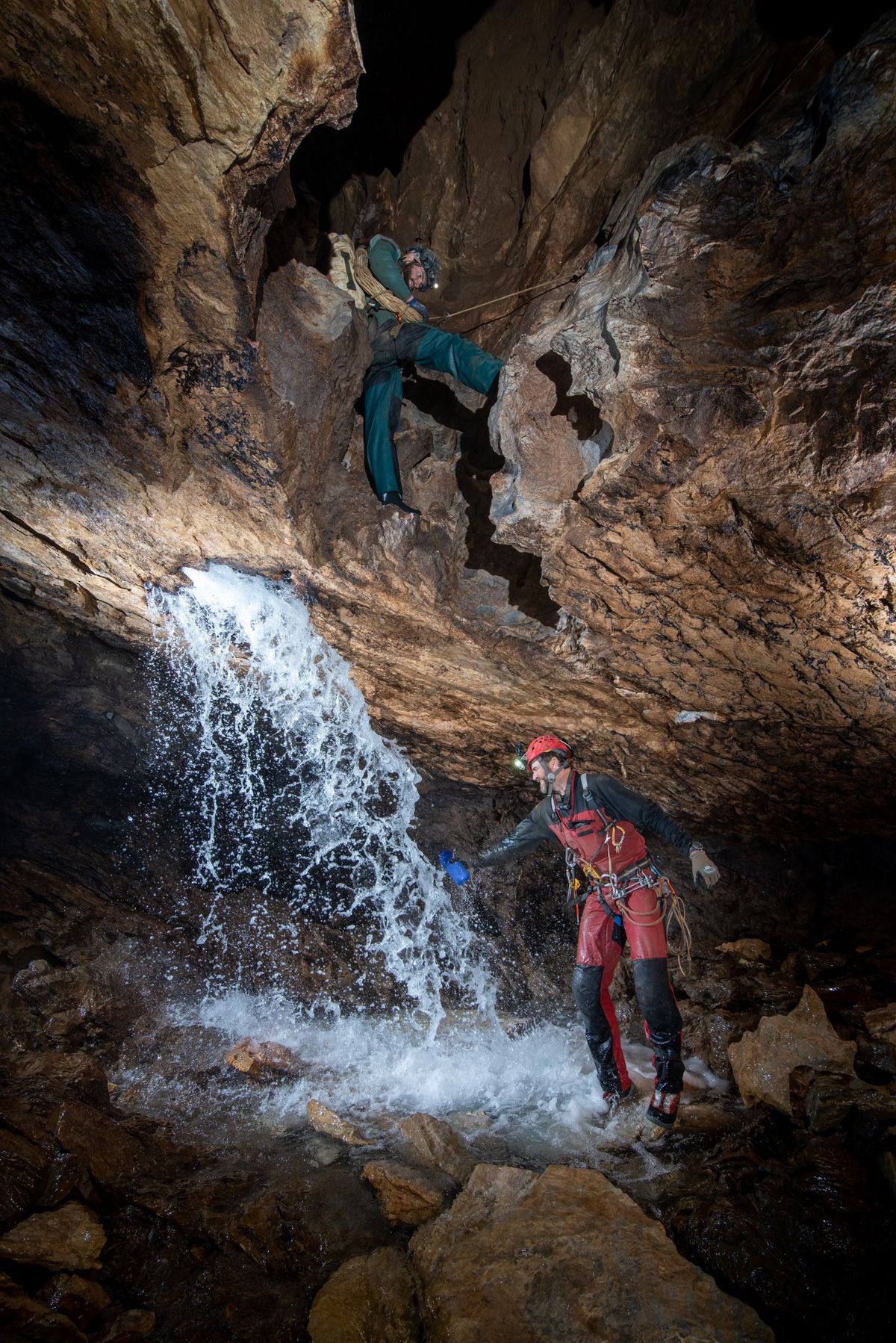

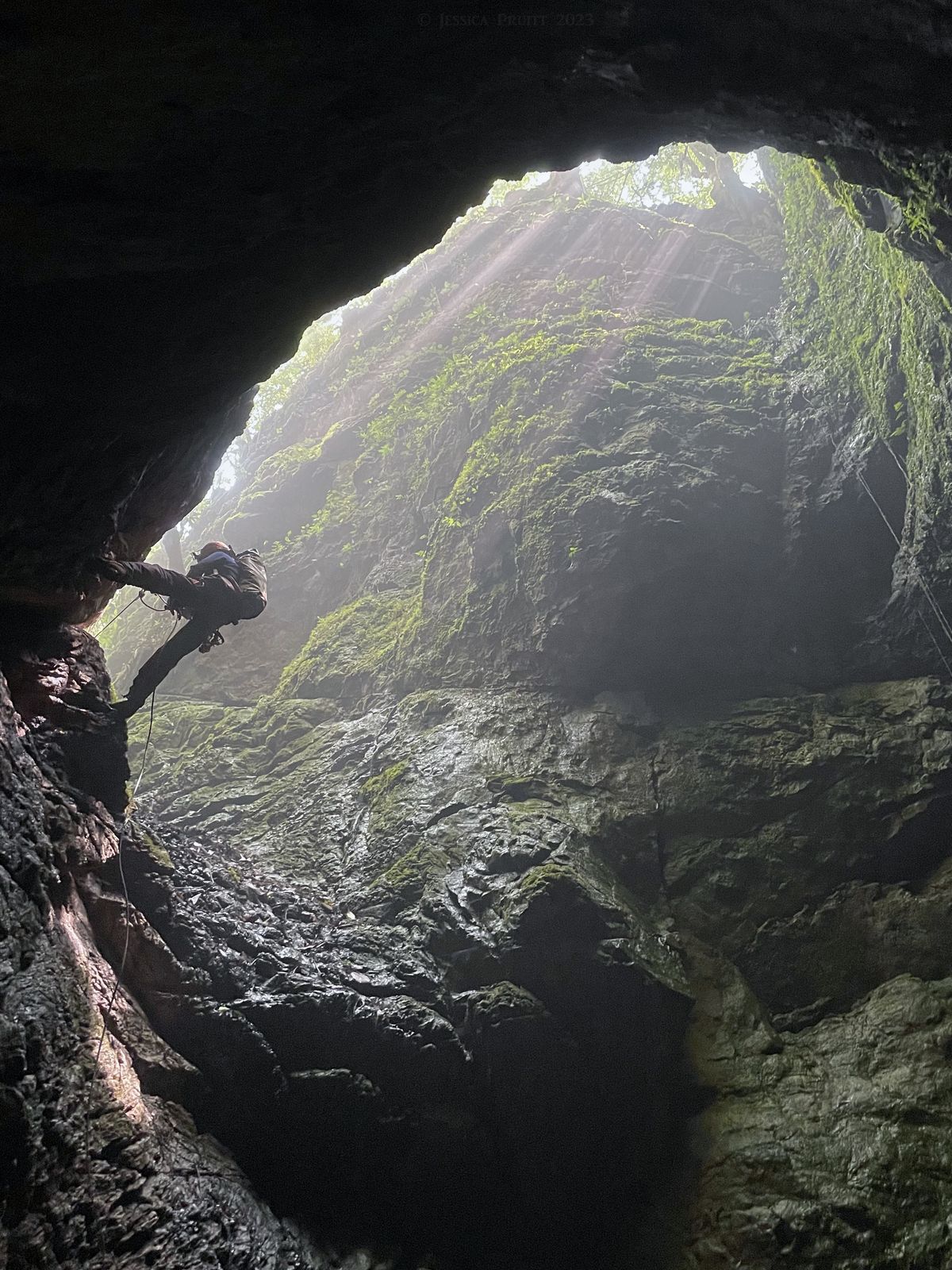
More:
https://www.livescience.com/planet-earth/colossal-cave-in-mexico-that-formed-15-million-years-ago-is-even-more-enormous-than-we-thought
Activists demand justice for environmentalist slain near Mexico City
ROGER MCKENZIE
FRIDAY, JUNE 23, 2023
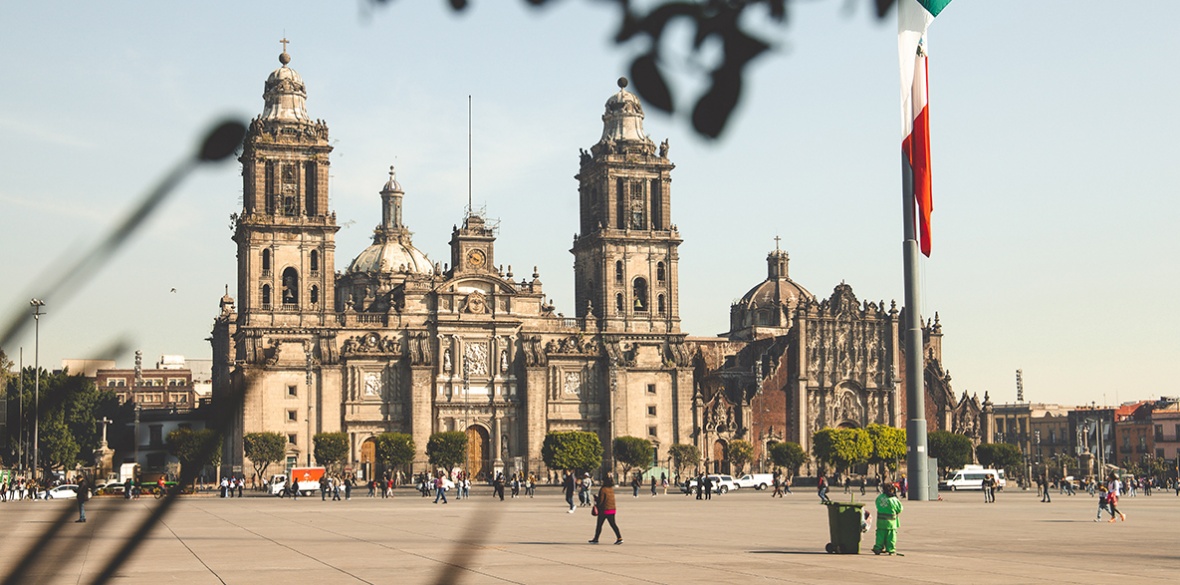
Photo: Bhargava Marripati / Creative Commons
ACTIVISTS on Thursday demanded justice for an environmentalist brutally killed near Mexico City earlier this month.
Alvaro Arvizu was attacked with an axe or hatchet on June 13 at an environmental research and education centre where he worked near the Iztaccihuati volcano, not far from the more famous Popocatepetl volcano.
Activists said that crime appeared to be retaliation for Mr Arvizu’s work in defending forests and water resources in the mountains that ring Mexico City.
Official reports initially suggested that he was killed during a robbery at the centre, but Pedro Moctezuma, its founder, disputed that idea.
Mr Moctezu
ma, who is now a researcher at the Autonomous Metropolitan University, a public institution that finances the centre, said: “We are certain that this was a planned, premeditated attack.”
. . .
Another environmentalist who ran a similar centre nearby was killed the day before Mr Arvizu lost his life.
More:
https://morningstaronline.co.uk/article/w/activists-demand-justice-for-environmentalist-slain-near-mexico-city
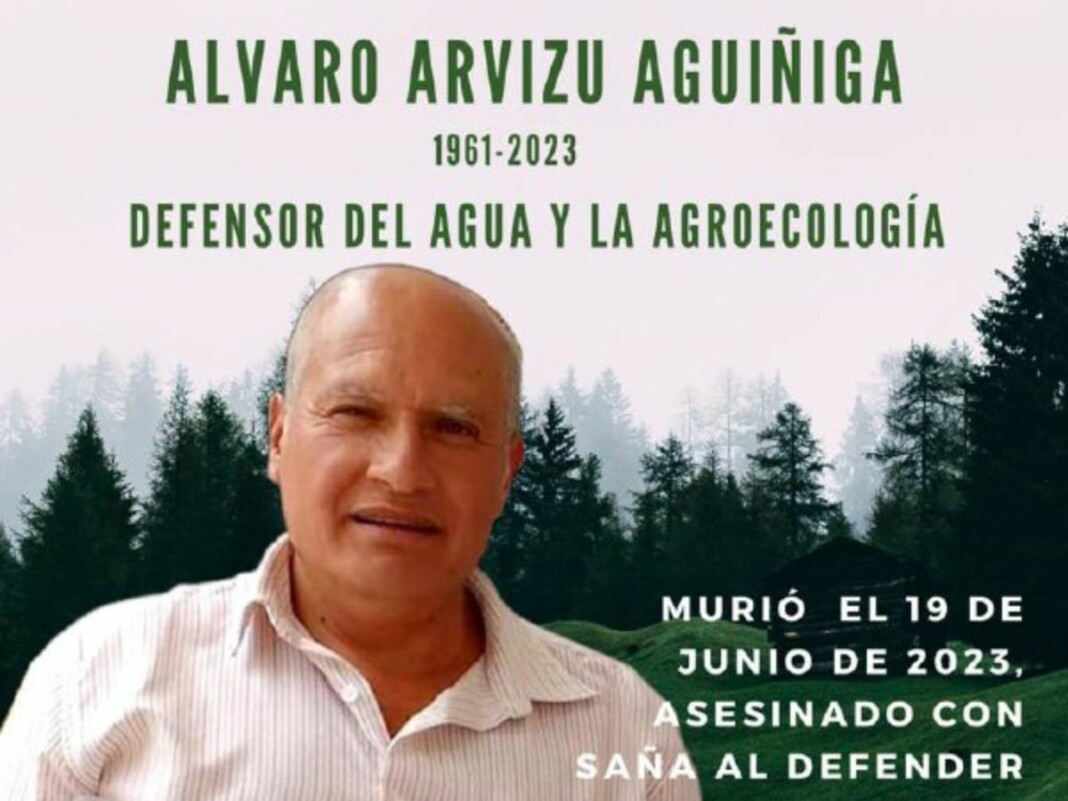
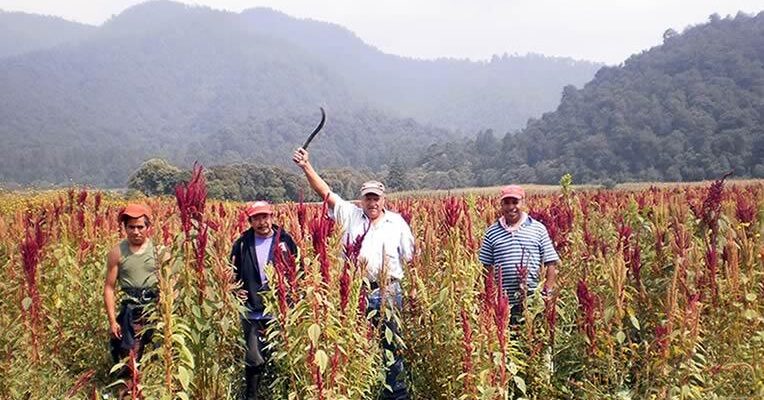




Major win: Canada just banned cosmetics animal testing and trade
By Kitty Block and Sara Amundson
June 23, 2023
In a massive step forward, Canada has just passed a ban on cosmetics animal testing and the sale of beauty products that rely on new animal test data to substantiate their safety, becoming the second North American country to do so; Mexico passed such a ban in 2021.
Our Humane Society International/Canada office has campaigned tirelessly for more than a decade to put an end to such tests with the tremendous support of our Research and Toxicology team. Our campaigning was bolstered by Animal Alliance of Canada and Lush Cosmetics, more recently leading a broader coalition of industry and nongovernmental organization partners to relegate these practices to the history books. We are thrilled that the Canadian government has heeded our call and banned this cruel and obsolete practice once and for all. The ban comes in the form of measures to amend Canada’s Food and Drug Act, contained in the 2023 federal budget bill. The amendment also bans false and misleading labeling pertaining to the testing of cosmetics on animals.
Paired with the Canadian government’s recent passage of historic measures to phase out all chemical toxicity testing on animals, this week’s victory positions Canada as a leader in advancing progressive, compassionate science. Moreover, in prohibiting cosmetics animal testing and trade, Canada now joins the European Union, United Kingdom, India, South Korea, Taiwan, New Zealand, Australia, Brazil and a total of 43 other countries that have already enacted similar bans or restrictions.
Humane Society International has spearheaded these and other legislative victories, giving the global cosmetics industry a cruelty-free makeover. The combined pressure of an ever-growing number of bans on the sale of newly animal-tested cosmetics has even been felt in China, which recently took steps to waive its longstanding animal testing requirements for imported regular cosmetics.
More:
https://blog.humanesociety.org/2023/06/major-win-canada-just-banned-cosmetics-animal-testing-and-trade.html
Mexican guitarist Rafael Flores stuns Steve Vai by playing For The Love Of God on two guitars
Mexican guitarist Rafael Flores stuns Steve Vai by playing For The Love Of God on two guitars simultaneouslyBy Jonathan Horsley published 2 days ago
Flores spent three years adapting the arrangement for two guitars and says performing it for Vai was "a dream come true"

Steve Vai and Rafael Flores
(Image credit: Steve Vai / Instagram)
Steve Vai turned up for his gig at the Teatro Metropólitan in Mexico City on 21 June and was greeted by the sight of a local guitarist playing one signature track For The Love Of God with a twist – he performed it on two electric guitars at once.
This, apparently, is Rafael Flores’ specialty. He is a dual-guitar legato master whose two-handed tapping skills are beyond reproach. Some guitarists might reach for the convenience of the double-neck; Vai certainly has on many an occasion. But not Flores. He just has two custom Ortiz Murcio double-cuts, equipped with a Seymour Duncan humbucker pairing, and makes the magic happen, juggling them both on their guitar straps.
As the keeper of the triple-necked Hydra, Vai, of all people, would acknowledge that. Game recognises game, and Vai, taking a video of the performance for Instagram, described Flores as a “wonderful man” and his take on the Passion And Warfare classic as a “lovely rendition”.
- video at link -
As Flores revealed in the comments, it took him three years to put it together. Vai is not the first guitarist whose material Flores has adapted for two guitars – sorry, two simultaneous guitars. He has reworked Always With Me, Always With You by Vai’s mentor Jo:e Satriani, and Something by the Beatles.
More:
https://www.musicradar.com/news/mexican-guitarist-steve-vai-for-the-love-of-god-two-guitars
Profile Information
Member since: 2002Number of posts: 160,527